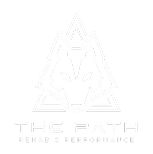Your Rehab Should Look like your Sport, and Here’s Why.

Imagine the following scenario. You are a highly active individual who is trying to overcome injury to get back to an elite level in your recreational or competitive sport. You decide to go to a physical therapy clinic for rehab, hoping that your care will focus on returning you back to the thing you love. Instead, you are given low-level, mat based exercises that do not challenge you in the way that your favorite activity does. You spend months doing similar exercises, and maybe you get to graduate to some bands or light weights. Eventually you are discharged from care for reaching “maximal medical improvement”, but you are no where closer to your athletic goals. A lot of your time and money has been effectively wasted without results.
Unfortunately this is a very real scenario a lot of our clients have gone through before coming to us. This is a huge problem with today’s standard physical therapy.
Now, I am not saying that low-level, mat based exercises are bad or wrong, because there is no such thing as a bad movement. There is a time and a place for everything. Sometimes, those lower level exercises are the first step in introducing pain free movement to someone who is acutely injured, has a lot of pain, and is afraid to move. However, with time the plan should evolve. It should get progressively harder, challenging you in different ways based on your end goal. Rehab is not a one size fits all, and if you have goals to get back to a specific activity, your rehab needs to eventually look like the activity you are working so hard to get back to.
Why is this so important?
Because how else is your body going to be ready to return to your sport if you have not been exposed to those demands at all through your rehab process? It’s like expecting a collegiate soccer player to successfully return to the field after only doing some clamshells and single leg balance for a knee injury without ever having worked on agility, cutting, or sprint work. Yes, that is an extreme analogy, but in some cases it is not too far from the truth. The point is that your body will not magically be ready for sport-specific demands, it has to be exposed to those demands systematically and with progressive intensity over time.
At the end of the day, if your rehab does not look like your sport, it is time to find another physical therapist who will help get you to where you want to go.
If you are someone who has gone through physical therapy before without successfully returning to the activities you love, click here to schedule a free phone consultation today to see if The PATH is the right fit for you.
Dr. Paulina Tselikis
PT, DPT, ATC
Co-Owner | The PATH Rehab & Performance
Sign up for our newsletter
Join our community and receive exclusive physical therapy insights, training strategies, and recovery techniques tailored for active people.
